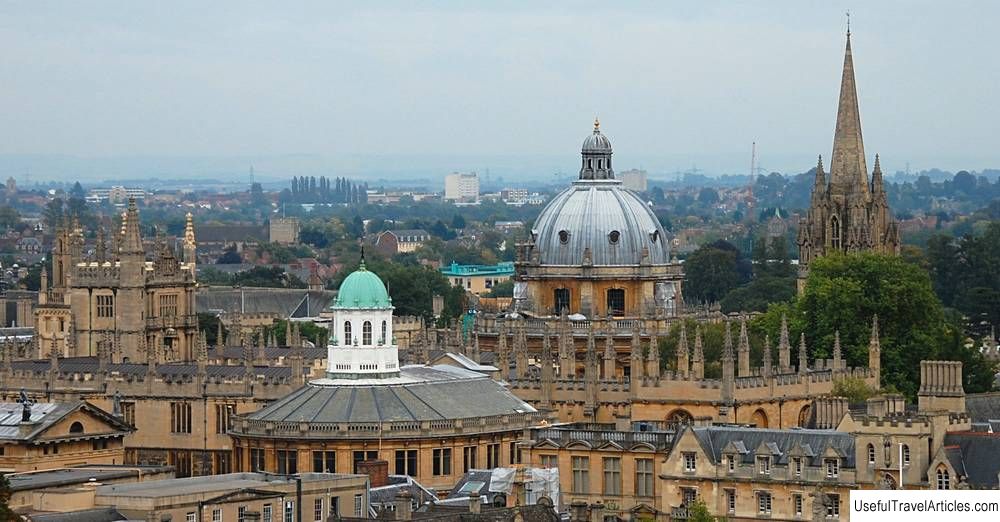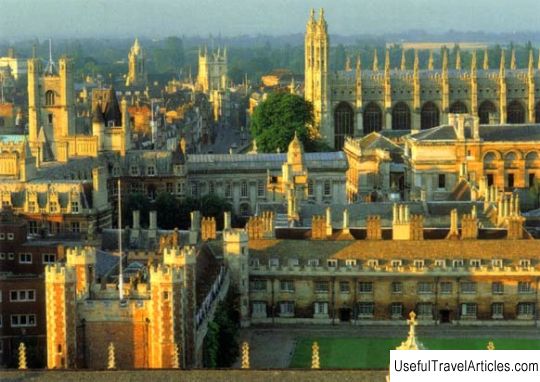University of Oxford description and photos - Great Britain: Oxford
Rating: 9,2/10 (5494 votes) 
University of Oxford description and photos - UK: Oxford. Detailed information about the attraction. Description, photographs and a map showing the nearest significant objects. The title in English is University of Oxford. Photo and descriptionThe University of Oxford (or simply Oxford) is the second oldest university in Europe (the oldest is the university in Bologna, Italy). It is impossible to name the exact date of the foundation of the university, but it is reliably known that teaching was carried out here in the 11th century. The university began to grow rapidly and gain in popularity after 1167, when King Henry II banned English students from studying at the Sorbonne. In 1209, after conflicts between students and residents of the city, some of the teachers and students moved to the city of Cambridge, where the University of Cambridge was founded. The two oldest universities in England have a lot in common, but much of the history of these educational institutions is the history of their centuries-old rivalry. The Formation of the University of OxfordAfter the expulsion of foreign students and teachers from the Sorbonne, many scholars returned to England and settled in Oxford. Foreign colleagues soon joined them. Since 1201, the chancellor is considered the head of the university. In the middle of the 13th century, many monastic orders established their educational institutions in Oxford. The Renaissance period had a huge impact on Oxford, both in teaching and in content. In 1636, William Loud, Bishop of Canterbury and Chancellor of the University, approved the Charter of the University, which served unchanged until the middle of the 19th century. Then some changes were made to the Charter: oral entrance exams were replaced by written ones, four women's colleges were formed (separate education remained until the 70s of the XX century). Oxford alumni include 40 Nobel laureates, 50 heads of government and many renowned scientists, writers, philosophers and politicians. University Tradition and StructureOxford students have historically been divided into “Northern” (including Scots) and “Southern” (including Irish and Welsh). This affects their membership in various student associations and college assignments. The structure of Oxford University is a federation: the university consists of 38 independent colleges and 6 so-called dormitories (halls), which do not have college status and are managed by third-party organizations, in particular religious ones. The central administration is headed by the vice-chancellor. The position of chancellor is rather nominal, and the chancellor is not directly involved in the daily life of the university. Academic classes - lectures, seminars, laboratory work - are conducted centrally, training programs are also coordinated for the entire university, and colleges provide a unique system of tutoring - when a personal mentor is assigned to each student. With rare exceptions, colleges do not specialize in any branch of science. The oldest colleges in Oxford are Blackfriar Hall, University College, Balliol College and Merton College. The newest is Kellogg College, founded in 1990. Oxford has over 100 libraries, 40 of which are part of the Bodleian Library - one of the oldest in Europe and one of the largest in the UK and the world. The university owns several museums, incl. Eshmolovsky Museum, The Natural History Museum, the Pitt Rivers Museum and the Science History Museum. Oxford honors traditions that have survived since its founding. Here you can see people in academic robes. Each college has its own color, and students wear striped wool scarves in their college colors or sleek navy blue scarves — this shade of blue is called Oxford Blue. By tradition, much attention is paid to sports - game sports, tennis and, of course, the famous rowing in eights.           We also recommend reading Nymphenburg Palace (Schloss Nymphenburg) description and photos - Germany: Munich Topic: University of Oxford description and photos - Great Britain: Oxford. |




